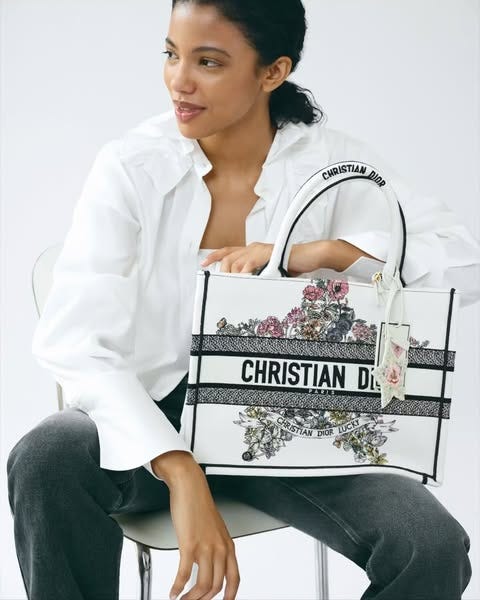Inside Intern Pierre’s portfolio
Kering, Hermès, Amex — plus his candid take on Burberry's revival, why the king of 'humanistic cashmere' is one to watch, and the American icon that got away

Follow the money. That’s what Dark Luxury is about: explaining the money to the creatives, and the creative to the money people. That’s why we spoke to Intern Pierre back in June, a family-office investor, short-seller and luxury obsessive, who was quietly building a following among the very executives he was betting against.
His cheeky nom de plume caught our attention, but what really mattered was the substance of his contrarian calls. His bearish view on LVMH struck a nerve. The story became one of our most-read pieces this year, bringing in new subscribers and sparking debate about whether the mass luxury boom of the past two decades had finally run aground.
Three months later, some of Pierre’s calls look far-sighted, especially on LVMH. But not everyone agrees. On 1 July, Goldman Sachs analyst Louise Singlehurst added LVMH to its European Conviction List, telling investors to “look through Q2 softness” and predicted roughly 69 per cent upside against just 5 per cent downside.
Pierre is unimpressed by this sort of consensus research. “Take Bain,” he says. “Claudia D’Arpizio is smart and has followed the industry for years. But these reports are really business development for consulting firms. They don’t want to alienate clients, so the outlook ends up hedged to death. Luxury might go up a little, might go down a little. It’s meaningless.”
He says what bothers him most is that they miss the big points while restating the obvious. “Their last report said the Middle East is strong for luxury but tied to oil prices. Sure, but if you look at production data, that’s not a near-term issue. They just missed it.” For Pierre, the lesson is clear: “These reports should come with a disclaimer: they’re marketing, not analysis. Pretending otherwise is irresponsible.”
Straightforward observations carry more weight, he says. “Luxury is fascinating because it sits in that grey area. It’s technically consumer discretionary — no one needs it — but when it’s marketed properly, people are convinced that they do. Dior’s book tote was a perfect example. At first it was mocked as too big, too loud, too obvious. Then it was everywhere: at the beach, by the pool, carried casually. Suddenly everyone wanted one. That aspirational dynamic is what makes luxury such an interesting space to invest in.”
Other sectors, he says, are harder to read. “In tech or healthcare, you can do diligence, know the company has almost nothing, and still watch the stock go up. Luxury is different. You can see the product, track demand, and build a picture that’s tangible.”
LVMH shares have fallen about 30 per cent in the past year, and the market remains divided. That made it the right moment to check back in with Intern Pierre. This time, he isn’t just highlighting risks, he is laying out the opportunities. So let’s take a look inside Intern Pierre’s portfolio.
Editor’s note: The views below are Intern Pierre’s own. Dark Luxury publishes them for informational purposes only — they are not investment advice.
Kering: A Contrarian Long
Since Alessandro Michele’s exit, Kering has suffered one of corporate luxury’s steepest ever falls. In Q1 2025, Gucci’s revenue dropped to €1.57 billion, down 25 per cent year on year, pulling group sales to €3.9 billion, a 14 per cent decline. By mid-year, revenue was €7.6 billion, down 16 per cent.
Pierre’s long bet on Kering has already returned more than 30 per cent, and the new CEO Luca De Meo, an automotive veteran who revived Seat and Renault, has been key. On paper, putting a car executive in charge of Gucci looks odd, but Pierre interviewed former colleagues of de Meo and liked what he heard.
“One of the things that came through in my conversations is that he’s very good at understanding what he doesn’t know and bringing in the right people to address that. Normally I’d question bringing in a guy from automotive, but the way he delegates and manages things is materially different than a lot of other people.”
He contrasts that with the usual C-suite approach: “Other CEOs will say, ‘Okay, we’re going to hire Bain or McKinsey or BCG, they’ll spend six months figuring it out, and then you’ve got some 26-year-old MBA giving you a map of where to fix stuff.’”
For Pierre, de Meo’s fast, informed decision-making is exactly what Kering needs to navigate the Gucci crisis. Demna Gvasalia has been brought in to replace the disastrous Sabato De Sarno, with a make-or-break Gucci debut due in September.
“I think the way he’s going to handle this is going to be interesting,” Pierre says. “He seems to make decisions very quickly — obviously informed and calculated, but quick. So it’ll be interesting to pay attention to those first few quarters.”
Hermès: Best in Breed
Hermès trades at about 45x earnings, with operating margins above 40 per cent. Shares are up roughly 29 per cent over the past year, a steady performance, that at one point in April saw its market cap briefly exceed that of the much larger LVMH.
“I’ve always liked that company. I’ve been long for a while. Still am. It hasn’t shot the lights out over the past year, but it’s a very good company. There’s still very strong demand for it,” Pierre says. For him, Hermès is the definition of “best in breed”.
What keeps it special is its unique savoire faire, based around charm, gentility, loyalty, discretion and scarcity. Executives openly criticise resellers, saying that it spoils the bond with real customers: “They don’t want someone coming in, getting a Birkin, and just flipping it. It’s like the art world — you build a relationship, you’re not flipping. Hermès has managed that balance really well.”
The family still owns a big stake. That’s important, Pierre notes, because it keeps this slower, gentler culture intact. And compared to sprawling conglomerates like LVMH, Hermès stays disciplined. “When you become too big—and you’ve seen it—you start taking risks on design or businesses you don’t know. That’s when cracks appear. Hermès has avoided that by sticking to what works.”
Pierre’s latest ideas go beyond the obvious. Behind the paywall, he reveals:
The luxury-adjacent stock that’s doubled in two years — and why he still thinks it belongs in a luxury portfolio.
His candid reassessment of Burberry, after one of our most-read calls of last year.
The American icon he missed — and what that says about staying disciplined in luxury.
The Hermès adjacent performer built on “humanistic capitalism”.
Plus: why Pierre is holding back his fresh short ideas for September — and what that signals about the market ahead.








